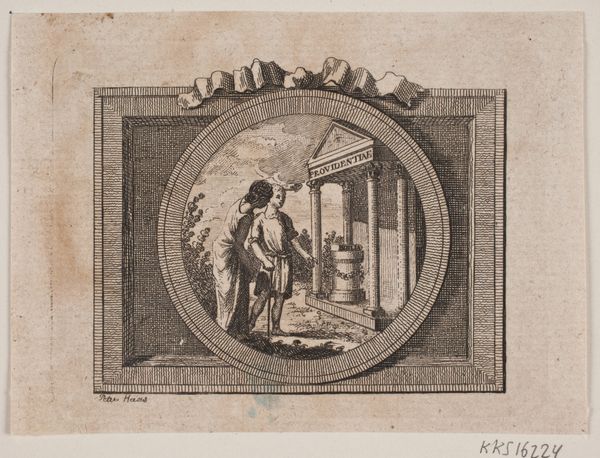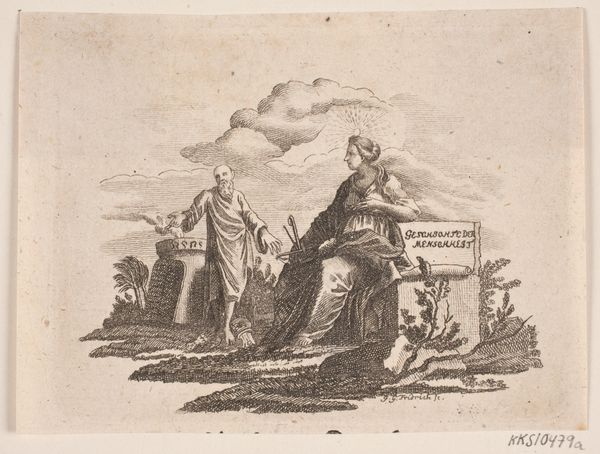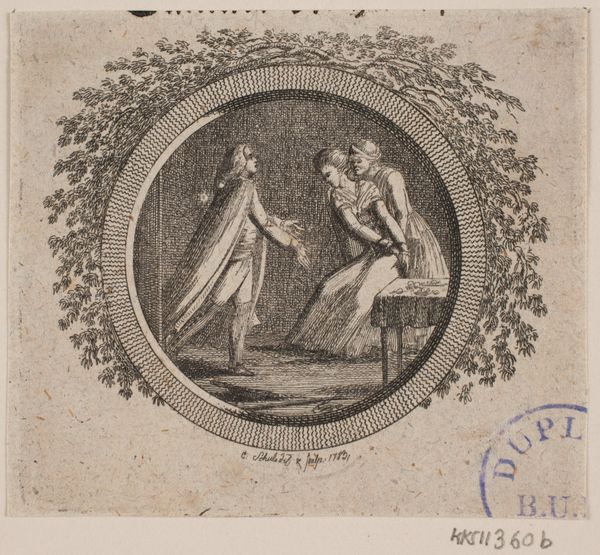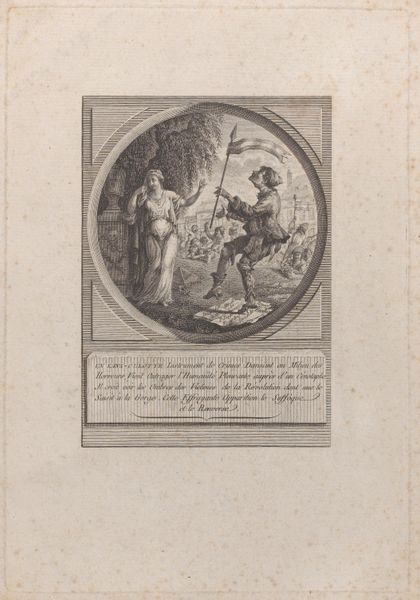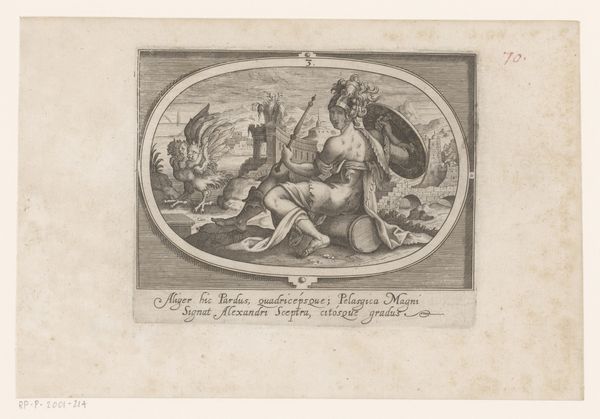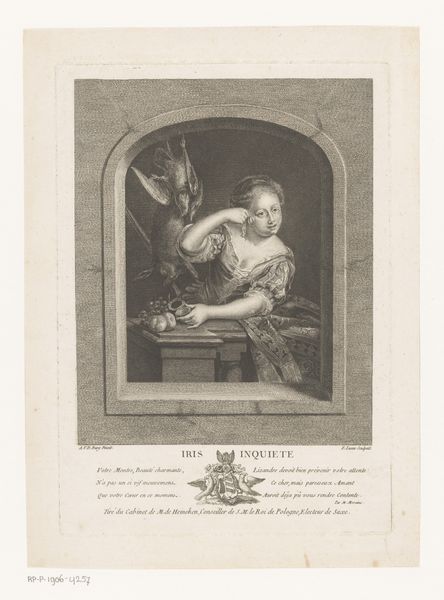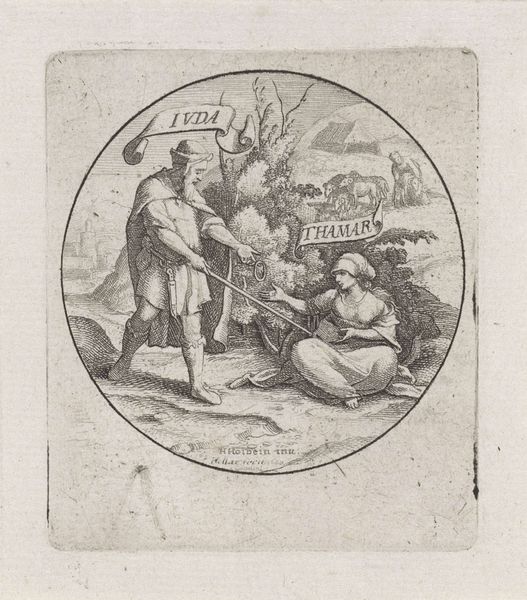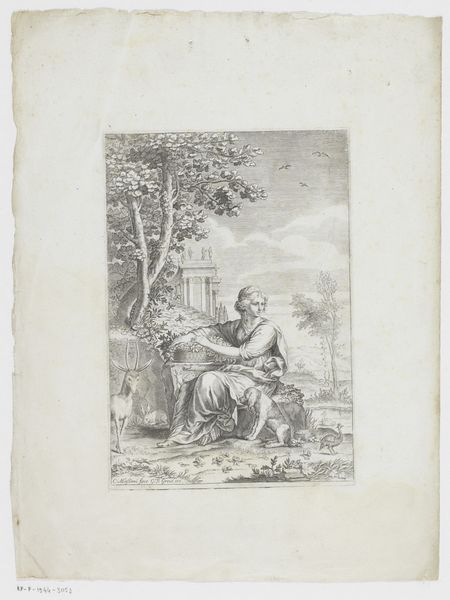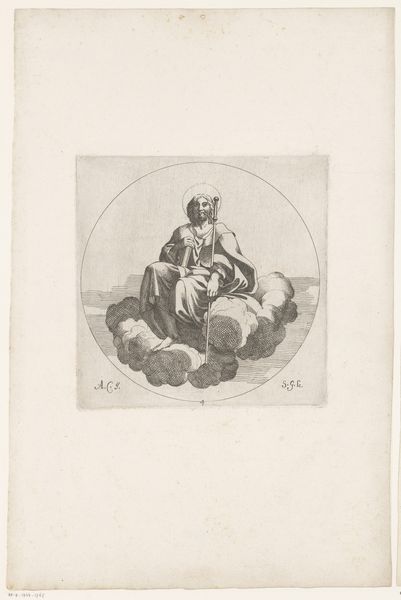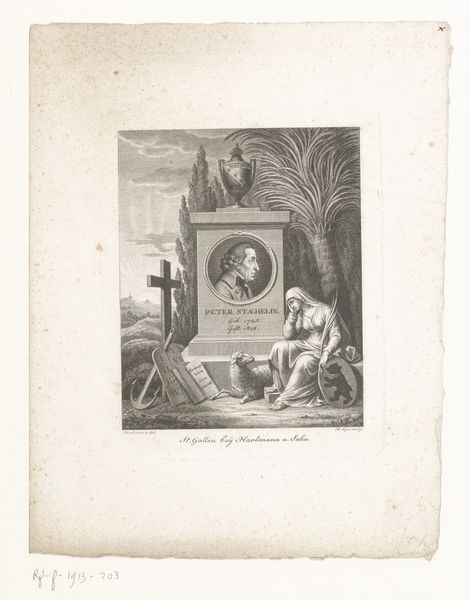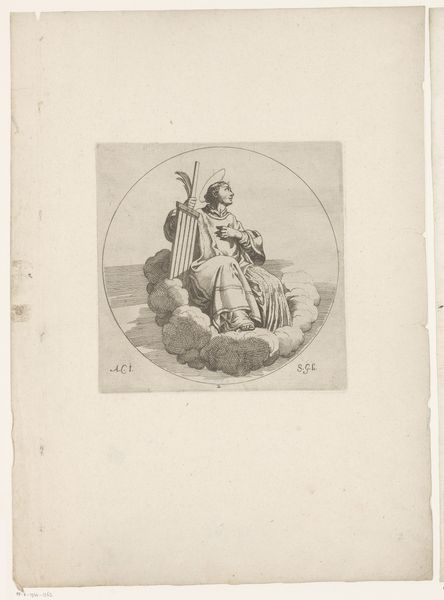
print, engraving
#
narrative-art
#
baroque
# print
#
figuration
#
engraving
Dimensions: 76 mm (height) x 108 mm (width) (plademaal)
Editor: So, this is "Vignet med gammel mand og et barn," made around 1700 by Gerhard Ludvig Lahde. It's an engraving. I find it kind of sad, there's a vulnerable, aged figure depicted here. How do you interpret this work within its historical context? Curator: This print engages with the narrative of Belisarius, a renowned Byzantine general. He was, according to legend and later popular imagination, unjustly blinded and reduced to begging in his old age, despite his past services to the empire. The image participates in a long tradition of illustrating the fickleness of fortune and the ingratitude of rulers. Lahde’s work, like many others depicting Belisarius, becomes a political commentary. Editor: A political commentary? In what way? Curator: Absolutely. By portraying Belisarius, Lahde implicitly critiques the social and political structures that allow for such injustices. Consider the act of producing and circulating this print: it's a visual act of public remembrance, challenging the viewers to contemplate their own societal values and the potential for abuse of power, even against those who were once celebrated heroes. Does knowing the legend change how you see the piece? Editor: Definitely. The child now seems to be the only source of support for this great general, which is both touching and a further indictment of those in power. So, the act of printing and displaying such an image itself becomes a form of political protest, highlighting a sense of social responsibility. Curator: Precisely. It encourages dialogue and critical thinking regarding justice, governance, and public memory. Art becomes a tool to not only reflect but to actively shape the perception of historical and contemporary power structures. Editor: This has broadened my perspective immensely! It’s more than just a historical depiction; it's a challenge to those structures, which is pretty powerful for an engraving. Curator: And that's the beauty of viewing art through a historical lens - it’s not just about aesthetics; it is about understanding power and its representation.
Comments
No comments
Be the first to comment and join the conversation on the ultimate creative platform.
